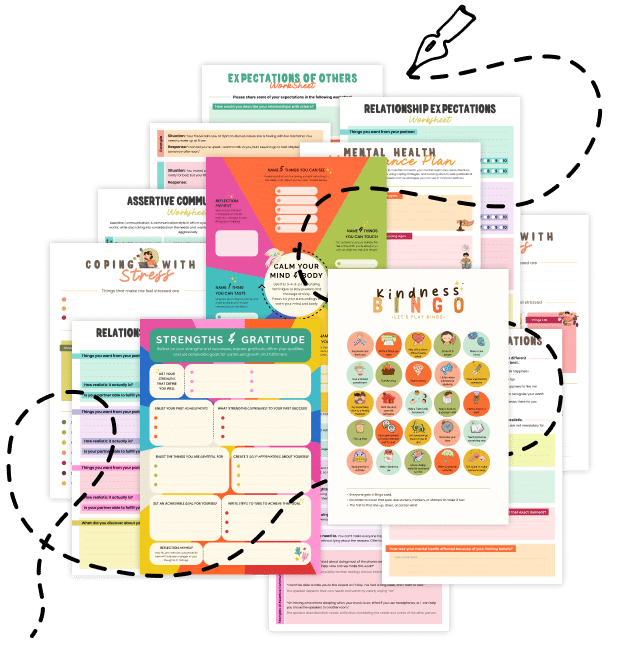20 Things You Should Know About Perceptual Narrowing
Enhance your mental performance by understanding how Perceptual Narrowing can sharpen your focus under pressure—and how to manage its downsides in everyday life.
1. What Is Perceptual Narrowing?
Perceptual Narrowing is a phenomenon where your focus tightens on specific stimuli, often in high-stress or high-arousal situations. Essentially, your mind filters out less relevant information so you can zero in on what’s most important.
2. Built-in Survival Mechanism
Think of it as your brain’s emergency spotlight. In dangerous or urgent scenarios, Perceptual Narrowing helps you react quickly and efficiently—an advantage that can be life-saving in certain contexts.
3. Common Examples
- A tennis player intensely tracking the ball in a critical match, barely noticing the crowd.
- A driver swerving to avoid a sudden obstacle, unaware of other details on the road.
4. Not Just About Stress
While stress often triggers Perceptual Narrowing, excitement and extreme concentration can do the same. Even passionate engagement in a favorite hobby can make peripheral details fade away.
5. How It’s Different from Inattentional Blindness
Inattentional Blindness is failing to see something unexpected because attention is elsewhere. Perceptual Narrowing is more deliberate—your brain intentionally filters out “unnecessary” data to optimize reaction times.
6. Adaptive but Not Always Helpful
Focusing intently can improve performance in critical moments. However, Perceptual Narrowing can backfire if you ignore relevant details—like missing an important cue while fixating on one task.
7. The Brain’s Role
The amygdala and other stress-response regions trigger the release of neurotransmitters (like norepinephrine), which heighten alertness. This biochemical surge narrows your sensory gates to prioritize what seems most urgent.
8. Connection to “Tunnel Vision”
You’ve likely heard the term “tunnel vision” in high-pressure scenarios—this is Perceptual Narrowing in action. It can feel like the world outside your immediate threat or goal simply vanishes.
9. Everyday Impact
Even if you’re not in life-or-death situations, everyday stress—like tight work deadlines—can prompt Perceptual Narrowing. This might help you push through a task, but risk overlooking broader considerations.
10. Sports and Performance
Athletes often harness Perceptual Narrowing to excel in high-intensity moments. Yet coaches also train players to broaden awareness so they don’t miss key signals, like teammates needing a pass.
11. Role of Emotional Regulation
Strong emotions like anger or fear amplify Perceptual Narrowing. Learning to stay calm under pressure can prevent your focus from becoming too restricted, so you maintain a more balanced perspective.
12. Psychological Flow vs. Narrowing
In a flow state, you’re fully immersed in an activity, but not necessarily stressed. Perceptual Narrowing can happen in flow states, but the key difference is that flow feels less tense and more effortless.
13. Perceptual Narrowing and Anxiety
Anxiety can shrink your focus to worst-case scenarios, creating mental blind spots. Techniques like mindfulness and breath control help you stay aware of the bigger picture.
14. Overcoming Unhelpful Narrowing
Breaking out of Perceptual Narrowing may require conscious effort:
- Pausing to scan the environment
- Asking for external feedback
- Practicing mental flexibility exercises
15. Tech and Distracted Environments
In noisy or tech-saturated settings, your brain often narrows to immediate pings or alerts, ignoring other important cues. Being aware of this helps you manage your attention more strategically.
16. Cognitive Load Matters
When your mental workload is high, you’re more prone to Perceptual Narrowing. Balancing tasks and reducing unnecessary cognitive strain can keep your perception more adaptable.
17. Training Benefits
Professional fields like aviation and emergency response often include scenarios that simulate stress. Trainees learn to cope with Perceptual Narrowing and maintain broader situational awareness.
18. Physical Clues
A racing heartbeat and shallow breathing often accompany Perceptual Narrowing. Recognizing these symptoms is the first step to regulating them—slowing your breath can help you widen your focus again.
19. Balancing Sharp Focus and Flexibility
The sweet spot is the ability to narrow focus in crunch time while still remaining open to essential peripheral information. Balancing sharp attention and situational awareness is crucial for peak performance.
20. Related Topics to Explore
- Inattentional Blindness: Similar concept where unexpected stimuli go unnoticed.
- Sensory Gating : How your brain filters sensory info to prevent overload.
- Stimulus Discrimination Training: Methods to sharpen perception for specific cues.
- Internal vs. External Focus of Attention: Managing where you direct your attention for better results.
Quick Tips to Boost (and Manage) Perceptual Narrowing
- Regulate Stress: Simple techniques like deep breathing and quick meditation can prevent narrowing from becoming too extreme.
- Practice Situational Awareness: Periodically scan your environment, especially in fast-paced settings.
- Use Focused Intervals: Work in short, intense bursts, then take mini-breaks to reset and widen your attention.
- Train Under Pressure: Simulate challenging conditions so you learn to control your focus without losing necessary details.
- Stay Mindful of Body Signals: A pounding heart or tense shoulders could signal narrowing—relax to regain balance.
Perceptual Narrowing can be a powerful ally when you need razor-sharp focus, but it becomes limiting if you can’t widen your view when necessary. By understanding how and why your brain narrows attention, you’ll be better equipped to harness this mechanism for productivity and performance, while avoiding its potential pitfalls. Share this article with friends or colleagues who thrive under deadlines or high-stakes situations—help them master the art of balanced focus!

